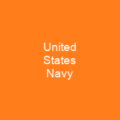What Exactly is a Navy and Why Does It Matter?
Imagine the vast expanse of the ocean, stretching endlessly like an uncharted frontier. A navy, much like a lighthouse guiding ships through treacherous waters, plays a pivotal role in safeguarding these maritime territories. But what exactly is a navy and why does it matter?
The Evolution of Naval Warfare
From the days when humans first fought from water-borne vessels to the modern era where aircraft carriers dominate, naval warfare has undergone a remarkable transformation. The term ‘navy’ originated from Latin navigium, meaning ‘a vessel or ship,’ and is related to Greek ναῦς (naus) and ναύτης (nautes), meaning ‘ship’ and ‘seaman.’ The strategic task of a navy includes projection of force, deterrence by nuclear missiles, and littoral warfare. Naval operations can be broadly divided into riverine, littoral, blue-water, and green-water applications.
The Rise of Modern Navies
Historically, the development of large capacity, sail-powered ships carrying cannon led to a rapid expansion of European navies. The Spanish and Portuguese navies dominated in the 16th and early 17th centuries. The repulsion of the Spanish Armada (1588) by the English fleet revolutionized naval warfare by the success of a guns-only strategy, causing a major overhaul of the Spanish Navy.
From the beginning of the 17th century, the Dutch cannibalized the Portuguese Empire in the East and, with the immense wealth gained, challenged Spanish hegemony at sea. The Battle of the Downs (1639) marked the final victory for the Dutch over the Spanish Navy. England emerged as a major naval power in the mid-17th century during the first Anglo-Dutch war.
Successive decisive Dutch victories in the second and third Anglo-Dutch Wars confirmed the Dutch mastery of the seas during the Dutch Golden Age, financed by the expansion of the Dutch Empire. The French Navy won some important victories near the end of the 17th century but a focus upon land forces led to the French Navy’s relative neglect.
Throughout the 18th century, the Royal Navy gradually gained ascendancy over the French Navy with victories in several conflicts. By the late 19th and early 20th centuries, navies began incorporating new technologies such as submarines and aircraft carriers. The Russian Navy was considered the third strongest in the world on the eve of the Russo-Japanese War, which resulted in a major defeat for the Russians.
Modern Naval Warfare
The Battle of Port Arthur marked the first time that mines were used for offensive purposes in warfare. The United Kingdom launched HMS Dreadnought in 1906, changing naval firepower and tactics once again. First practical military submarines were developed in the late 19th century and had proven to be a powerful arm of naval warfare by the end of World War I.
Nazi Germany’s submarine fleet of U-boats almost starved the United Kingdom into submission during World War II. The German battleship Tirpitz was severely damaged by miniature submarines known as X-Craft. Aircraft carriers demonstrated their ability to strike decisively at enemy ships out of sight and range of surface vessels in the 1940s, marking a major paradigm shift in naval warfare.
The Battle of Leyte Gulf (1944) was a significant naval battle in history; by 1945, carriers became dominant forces in naval warfare. The US Navy became the largest naval power after World War II, with over 70% of global naval vessel tonnage. The Soviet Navy emerged as a major force during the Cold War, while only two nations operate CATOBAR carriers.
Modern Naval Operations and Structure
Today’s warships are significantly faster than in years past, thanks to improved propulsion systems. Engines have become more efficient, requiring fewer sailors to operate them. The term ‘boat’ refers to small craft limited in their use by size and usually not capable of making lengthy independent voyages at sea.
Navies use many types of boats, ranging from dinghies to landing craft, powered by diesel engines, out-board gasoline engines, or waterjets. Rigid-hulled inflatable boats are also used. Patrol boats are used for patrols of coastal areas, lakes, and large rivers. Landing craft are designed to carry troops, vehicles, or cargo from ship to shore under combat conditions.
Special operations craft are high-speed craft used for insertion and extraction of special forces personnel. Boats used in non-combat roles include lifeboats, mail boats, line handling boats, buoy boats, aircraft rescue boats, torpedo retrievers, explosive ordnance disposal craft, utility boats, dive boats, targets, and work boats.
Naval Ranks and Organization
Navies typically have two sets of ranks: one for enlisted personnel and one for officers. Typical ranks include Midshipman/Ensign/CORVETTE LIEUTENANT, Sub Lieutenant/Lieutenant Junior Grade/FRIGATE LIEUTENANT, Lieutenant/Lieutenant Commander/COMMANDER. Flag officers include any rank that includes the word ‘admiral’ or ‘commodore.’
The most senior rank employed by a navy tends to vary depending on the size of the navy and whether it is wartime or peacetime. For instance, in the United States Navy, Royal Australian Navy, Irish Naval Service, Vice Admiral, Commodore, naval infantry, marines, amphibious operations, land warfare, ship-borne soldiers, Spanish Infantería de Marina, Royal Marines, British Royal Navy, French Troupes de marine, and United States Marine Corps play crucial roles.
Conclusion
In the grand tapestry of global defense, navies stand as the guardians of maritime peace. From ancient times to the modern era, their evolution mirrors the changing face of warfare itself. As we look towards the future, one thing is certain: the role of a navy remains as vital today as it was centuries ago.

You want to know more about Navy?
This page is based on the article Navy published in Wikipedia (retrieved on December 28, 2024) and was automatically summarized using artificial intelligence.






